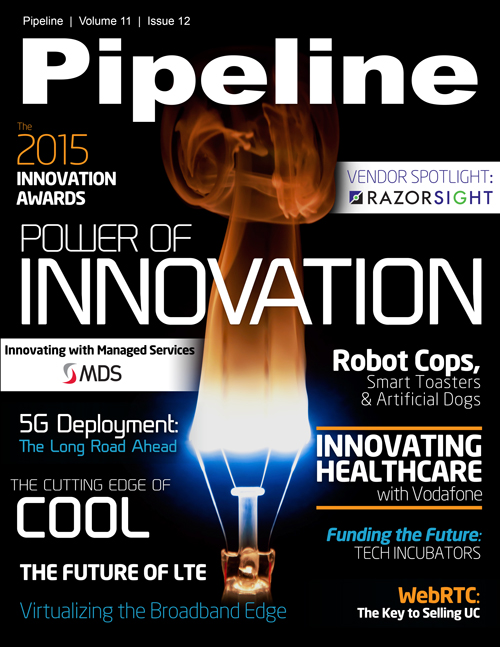Robot Cops, Smart Toasters, and Artificial Dogs
“Our toaster tests you, and decides whether you will be a worthy host. If the toaster is not happy with you, it will share itself. This website will allow you to follow where the toasters are and what they are saying about their habitat. See if there are toasters available; try to convince one to come to you. If there’s a toaster that is unhappy with its host, you can ask it to come and live with you. If you lose a toaster, then you are on the 'black toast list' - and that’s not good!”
Social toasting aside, there are other advantages here that could be leveraged by savvy service providers. Many homes already have TVs in the kitchen. Device manufacturers will soon integrate screens directly into the home appliances. Now imagine the marketing and data opportunities that exist in this environment. In fact, the toaster of the future could be completely subsidized by the carrier, provided the toaster screen displayed an ad for Pop Tarts every so often. This is the future, folks!
Virtual customer support
Everything from the desktop to the network itself is benefiting from virtualization, and customer support is an area of great interest that could gain from this transformation. The reasons are simple: customer support is expensive and time consuming and simultaneously very closely linked to customer satisfaction and churn. Self-help portals are gaining traction, but with WebRTC, virtual customer support becomes possible and cost-effective.
The importance of the gateway
Loads of cool stuff is coming—like Carl Sagan explaining the stars in the sky, there are billions and billions of new devices headed for our homes, cars, kitchens, classrooms, bedrooms, and boardrooms. Ensuring these devices work together in a seamless fashion and don’t require tedious manual authentication and disparate log-ins is critical. Who will drive this, though? All companies talk interoperability, but at the end of the day Samsung will work best with Samsung, Apple with Apple. Standards are one solution, but standards take a long time to be designed, ratified and adopted. The connected device gateway is what can solve this problem, and again, service providers sit right in the middle. An analogy can be drawn to NFV, with the devices as VNF (virtualized network functions), and the service provider as the orchestrator.
Security play
Just as important as connecting all these cool new devices is securing them. No one wants a connected toaster that could become a bot in a denial of service attack. These risks will only become intensified as more and more devices proliferate and come on line. Pipeline has reported on instances of baby monitors being hacked and the ease of hacking SCADA systems used for managing municipal utilities. More recently, a security researcher was arrested for allegedly proving that commercial airliners can be hacked by jacking into the in-flight entertainment systems.
The possibility of robotic pets, such as assistance or companion animals is very real. As any dog owner knows, however, animals with teeth and claws need training to prevent unfortunate incidents. The same goes for the robot dogs of the future. Ensuring that their systems and communication protocols are secure is paramount.
Welcome to the future
The line between science fiction and reality is blurring. From automated smart cities to self-driving cars and companion robots, we will soon be living in a world that is greatly enhanced by connected machines. Service providers can leverage their unique assets and abilities to tap into these burgeoning markets. Key strategies include unified device gateway management, security, guaranteed quality of service (QoS), and leveraging WebRTC to easily embed communications into next-gen experiences.



















